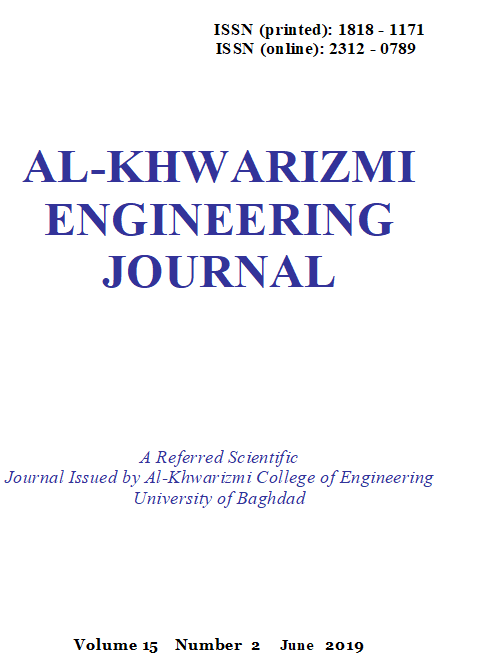Mesoporous Silica MCM-41 as a Carriers Material for Nystatine Drug in Delivery System
DOI:
https://doi.org/10.22153/kej.2019.11.003Abstract
In the present study, MCM-41 was synthesis as a carrier for poorly drugs soluble in water, by the sol-gel technique. Textural and chemical characterizations of MCM-41 were carried out by X-ray diffraction (XRD), Fourier transform infrared (FTIR), scanning electron microscope (SEM), and thermal gravimetric analysis (TGA). The experimental results were analyzed mesoporous carriers MCM-41. With maximum drug loading efficiency in MCM-41 determined to be 90.74%. The NYS released was prudently studied in simulated body fluid (SBF) pH 7.4 and the results proved that the release of NYS from MCM-41 was (87.79%) after 18 hr. The data of NYS released was found to be submitted a Weibull model with a correlation coefficient of (0.995). The Historical data experimental design facilitated the formulation and optimization of sustained discover the optimal formulation to loading drug, combine process variables, mixture components and categorical factors in one design.
Downloads
Downloads
Published
Issue
Section
License
Copyright: Open Access authors retain the copyrights of their papers, and all open access articles are distributed under the terms of the Creative Commons Attribution License, which permits unrestricted use, distribution, and reproduction in any medium, provided that the original work is properly cited. The use of general descriptive names, trade names, trademarks, and so forth in this publication, even if not specifically identified, does not imply that these names are not protected by the relevant laws and regulations. While the advice and information in this journal are believed to be true and accurate on the date of its going to press, neither the authors, the editors, nor the publisher can accept any legal responsibility for any errors or omissions that may be made. The publisher makes no warranty, express or implied, with respect to the material contained herein.
















